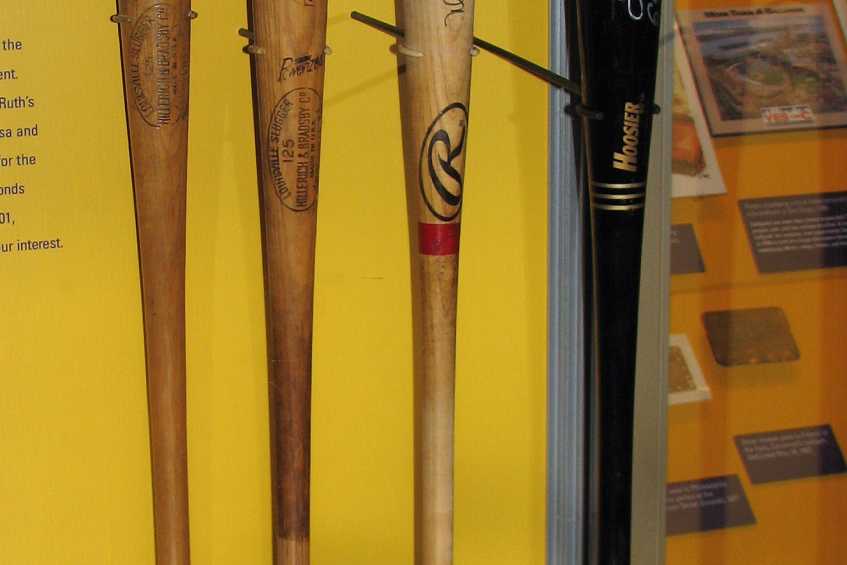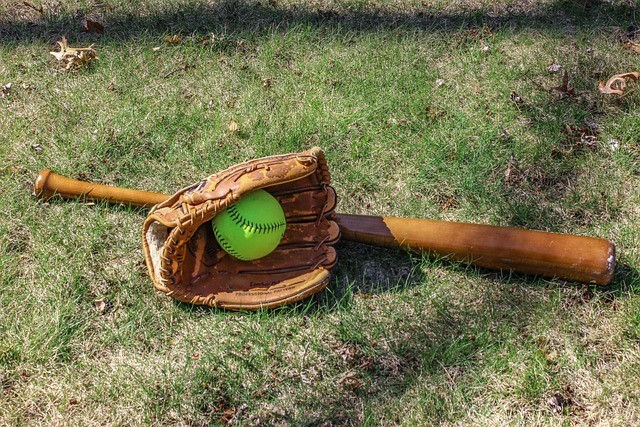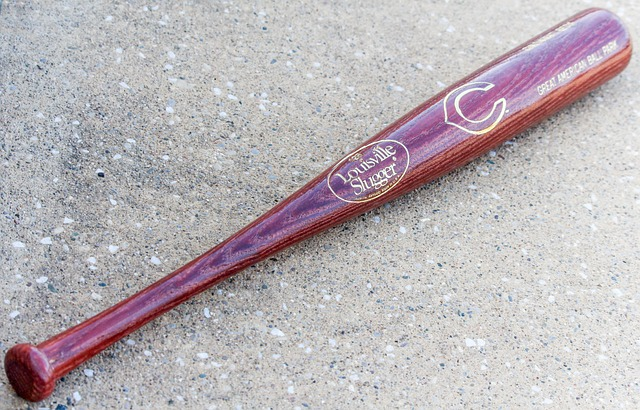
Hello, fellow baseball aficionados! If you’re as intrigued by the ins and outs of our beloved sport as I am, you’ll appreciate today’s deep dive into a rather sticky subject. Yes, today we’re unpacking the fascinating topic of pine tar in baseball. This viscous, dark brown substance may seem inconsequential to some, but those well-versed in Major League Baseball know its true worth. You might wonder, “what does pine tar do in baseball?” or “why is it such a big deal?” Well, stick around (pun intended!) as we delve into the alluring world of baseball pine tar, its uses, its controversies, and its role in shaping the game we know and love today.
Pine tar is a sticky substance made from pine wood through a process of high temperature carbonization. This brownish black, sticky substance is a mainstay in baseball, especially when we discuss the tools of the trade – baseball bats.
At first glance, you might question, “Why on earth would someone intentionally discolor and make a bat sticky?” Well, the answer lies in the incredible advantages pine tar brings to the game. Players apply pine tar to their bats, specifically the bat handle, to ensure a firm yet more relaxed grip. No one likes the feeling of a bat slipping from their hands mid-swing, right? The sticky nature of pine tar mitigates that risk.
Interestingly, the use of pine tar also extends beyond the players’ bare hands. Some baseball players who prefer batting gloves also apply pine tar to them. This not only enhances the tackiness of the grip but also reduces the chances of the bat flying out of the player’s hands during an at-bat, thereby improving contact with the ball.
Pine tar, thus, has become somewhat of a secret sauce for players seeking a better grip and, consequently, a better swing. The more pine tar applied, the more firm the grip, giving players a chance to achieve that perfect home run!
In the upcoming sections, we’ll delve deeper into the historical events that shaped the relationship between pine tar and Major League Baseball, shedding light on the controversies and rules surrounding this tacky substance. Let’s dive right in!
The sticky relationship between pine tar and baseball dates back decades, punctuated by moments of intense controversy and debate. The most notable of these moments is the notorious “Pine Tar Incident” that took place on July 24, 1983, involving George Brett of the Kansas City Royals.
During this memorable game against the New York Yankees, Brett hit a two-out, two-run homer in the ninth inning, seemingly turning the tide of the game in the Royals’ favor. However, the Yankees’ manager, noticing the excess pine tar on Brett’s bat, raised an objection.

The bone of contention was the amount of pine tar on Brett’s bat. According to the MLB regulations at the time, pine tar was allowed on the bat handle but not beyond 18 inches up from the bottom. Brett’s bat had pine tar nearly halfway up the barrel – way more than the prescribed limit, hence the term “too much pine tar.” The umpires, after measuring the bat against the width of home plate (which is 17 inches), agreed with the Yankees’ manager and called Brett out, nullifying his home run and seemingly ending the game in favor of the Yankees.
The Royals, predictably, were not pleased. They lodged a protest with the American League president, arguing that the amount of pine tar on the bat, while against the letter of the rules, did not provide Brett with an unfair advantage. The league president agreed, reinstating Brett’s home run, and the remainder of the game was played several weeks later.
This event, now known as the “Pine Tar Game,” led to a revision and clarification of the MLB’s rules regarding pine tar on bats. In the next section, we’ll delve into the specifics of these rules, their implications, and why, in some cases, pine tar is considered illegal in baseball. So, stay with us as we continue to unravel the sticky saga of pine tar in baseball.

Now, you might be asking, “Why is pine tar illegal on bats?” To understand this, we need to venture into the realm of baseball rules and regulations. Pine tar, as a substance, is not outright illegal in baseball. Its legality is tied to its application and extent on the bat, making the concept of “pine tar illegal” a nuanced one.
The infamous Pine Tar Incident, as discussed earlier, led to an overhaul of the MLB regulations regarding the use of pine tar on bats. Rule 1.10(c) of the MLB rule book previously stated, “The bat handle, for not more than 18 inches from the end, may be covered or treated with any material or substance to improve the grip. Any such material, including pine tar, which extends past the 18-inch limitation, in the umpire’s judgment if the pine tar extends past 18 inches, shall cause the bat to be removed from the game.”
This rule, while precise in its wording, was ambiguous in its application. Did it mean that a bat with excess pine tar was simply removed from the game, or did it lead to more severe penalties, like calling the batter out?
Post the Pine Tar Incident, it was clarified that while a bat with excessive pine tar (more than the prescribed 18 inches from the handle) would be removed from the game, the batter would not be called out. This nuanced distinction has given rise to the term “pine tar rules.”
However, it’s not just about the application on the bat; the MLB has stringent regulations against foreign substances in the game, classifying them as illicit. If a pitcher is found to have a foreign substance, such as pine tar, on his person, he can be ejected from the game and face subsequent suspension. This is because the application of substances like pine tar can modify the ball’s behavior, providing the pitcher with an unfair advantage.
We have just scraped the surface of the legality of pine tar in baseball. In the following section, we’ll explore the use of pine tar in modern baseball, its advantages, and its alternative options. Buckle up as we continue this gripping journey!

So, how prevalent is the use of pine tar in today’s game? If you’ve been following closely, you might wonder, “Do MLB players use pine tar?” The answer is, absolutely yes! But remember, they use it within the prescribed limits. Major League Baseball players often apply pine tar to their bats for a better grip, more controlled swing, and to prevent the bat from slipping out of their hands.
Pine tar allows a batter to hold the bat more lightly, leading to a more relaxed grip. A relaxed grip can increase swing speed and control, allowing for better contact with the ball, and potentially, more “pop” or power in the swing. So, the primary advantage that pine tar provides in baseball is improved grip, leading to enhanced performance at the plate.
But pine tar isn’t the only substance players can use for a better grip on their bats. Alternatives include rosin (a solid form of resin), batting gloves, grip-enhancing sprays, and even grip-enhancing tape. These alternatives are popular, especially in Little League Baseball, where the rules concerning pine tar might differ.
Now, here’s another point to consider, “What can I use instead of pine tar in baseball?” Or, “Should I put pine tar on my bat?” Well, if you’re not comfortable with pine tar, feel free to experiment with the alternatives mentioned above. Remember, what works for one player might not work for another. It’s all about personal preference and what allows you to perform at your best on the field.
In the next section, we will address some of the controversial aspects of using pine tar and its place in the future of baseball. Don’t go anywhere, there’s still a lot more to unravel in this compelling tale of pine tar and baseball!
Despite its widespread use, the application of pine tar is still a contentious issue in baseball, raising questions about its fairness and legality. The controversy mainly stems from the perception that it gives hitters an unfair advantage, a claim that most hitters and even some pitchers vehemently deny. This leads us to a commonly asked question: “Does pine tar help hitters?”
Indeed, as we’ve discussed earlier, pine tar enhances the grip on the bat, potentially improving a hitter’s performance. But it doesn’t impact the trajectory of the ball, unlike how a foreign substance on a ball can aid a pitcher’s spin rate and ball movement. It’s this distinction that lies at the heart of the controversy.
Interestingly, in the modern game, the use of sticky substances by pitchers has come under scrutiny. While pine tar is technically illegal for pitchers, some have argued that they should be allowed to use it (or a similar substance) for grip, especially in cold weather when the ball can be slick. This has created a parallel debate: “Do MLB pitchers use pine tar?” Some do, often covertly, risking ejection and suspension if caught.
The future of pine tar in baseball is uncertain. It remains a critical part of the game, particularly for hitters, but its use is continually debated and reevaluated. There may come a time when baseball decides to ban pine tar entirely, or perhaps more interestingly, develop a standardized, league-approved substance for both hitters and pitchers to use.
As we close this discussion, it’s evident that pine tar has played an integral part in shaping baseball’s history and its current state. Whether you view it as a necessary tool for enhancing grip or an illicit substance offering an unfair advantage, the impact of pine tar on the game of baseball is undeniable. Whatever the future holds, the relationship between baseball and pine tar will undoubtedly continue to evolve, just like the sport itself.
In the next post, we’ll delve into more intriguing aspects of baseball, bringing you insights and analyses straight from the diamond. Until then, keep swinging, keep enjoying the game, and stay tuned for more!
We’ve traveled together through the sticky and controversial world of pine tar in baseball, from its roots in the woodlands, the Pine Tar Game, to its role in the modern game, and the questions about its future.
Throughout our journey, we’ve addressed several questions, including “What does pine tar do for pitching?” and “Why is pine tar banned in baseball?” We’ve explored the answers and provided you with the necessary context and historical background to understand this complex and fascinating issue.
Looking ahead, one thing is certain: the conversation around pine tar and other substances in baseball will continue. As long as the sport continues to evolve, so will the tools players use and the rules that govern them. What does this mean for you, the fan? Simply put, more thrilling moments to witness, more controversies to debate over, and more history to be a part of.
As we draw this discussion to a close, we leave you with this thought: Baseball is a game of inches, where the smallest factor can make the biggest difference. Whether it’s pine tar on a bat, a perfectly timed home run in the ninth inning, or a miraculous catch on the outfield wall, it’s these details that make baseball so wonderfully unpredictable and exhilarating.
Thank you for joining me on this exploration of pine tar in baseball. I hope this post has helped you understand why this sticky substance matters so much to the sport we love.
Stay tuned for our next post where we dive into another captivating aspect of baseball, taking you deeper into the game, one blog post at a time. Keep loving baseball, folks!
Pine tar isn't typically used in pitching. Instead, it's commonly used by batters to improve their grip on the bat. Some pitchers have tried to use substances like pine tar to get a better grip on the ball, but it's considered illegal in professional leagues.
Pine tar is not entirely illegal on bats, but there's a limit to how much you can use. According to MLB rules, pine tar should not exceed 18 inches from the handle end of the bat. Exceeding this limit can cause the bat to be considered altered, which can influence the trajectory and speed of the ball.
Yes, pine tar does help hitters by improving their grip on the bat. A better grip can help prevent the bat from slipping out of the player's hands during a swing, allowing for better control and accuracy when hitting the ball.
MLB rules strictly prohibit the use of pine tar by pitchers. That being said, there have been instances where pitchers have been suspected or caught using pine tar or similar substances to improve their grip on the ball.
Yes, it's illegal for pitchers to use pine tar in the MLB. Using foreign substances can alter the ball's path, making it unfair for the hitters. Any pitcher caught using such substances faces potential disciplinary actions.
Baseball players often apply pine tar to their helmets as a readily accessible supply during the game. They can rub their batting gloves on their helmet before an at-bat to improve grip. It's not about the helmet but convenience.
The most famous pine tar incident in baseball is the "Pine Tar Game" on July 24, 1983. In this game, George Brett of the Kansas City Royals had a home run revoked because the umpire ruled that the amount of pine tar on Brett's bat exceeded the allowed limit. The decision was later overturned, but the incident sparked much controversy and discussion about the pine tar rules in baseball.
Chris Sloan is a former baseball league commissioner and travel baseball coach who has made significant contributions to the sport. In 2018, he founded selectbaseballteams.com, a website that helps parents find youth and travel baseball teams in their local areas. Since its launch, the website has experienced impressive growth, offering a wealth of resources including teams, news, tournaments, and organizations. Chris's unwavering passion for baseball and his innovative approach to connecting parents with quality baseball programs have earned him a respected reputation in the baseball community, solidifying his legacy as a leading figure in the world of youth and travel baseball.
There are 0 comments on "What Does Pine Tar Do in Baseball? Exploring the Game’s Stickiest Debate"
chandler allen says:
"Hi my name is chandler, i’ve enjoyed..."
On Wanting to tryout for summer ball. as an 18 year old
david graham says:
"With no current MLB team in Canada,..."
On With no current MLB team in
Charles Chavez says:
"To All Coaches: Do you have13U or..."
On Looking for Games